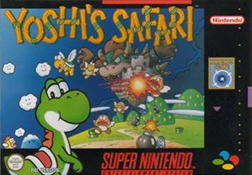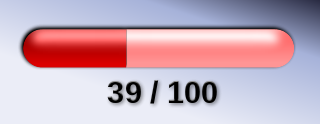Dance Dance Revolution (DDR) is a music video game series produced by Konami. Introduced in Japan in 1998 as part of the Bemani series, and released in North America and Europe in 1999, Dance Dance Revolution is the pioneering series of the rhythm and dance genre in video games. Players stand on a "dance platform" or stage and hit colored arrows laid out in a cross with their feet to musical and visual cues. Players are judged by how well they time their dance to the patterns presented to them and are allowed to choose more music to play to if they receive a passing score.

A player character is a fictional character in a video game or tabletop role-playing game whose actions are controlled by a player rather than the rules of the game. The characters that are not controlled by a player are called non-player characters (NPCs). The actions of non-player characters are typically handled by the game itself in video games, or according to rules followed by a gamemaster refereeing tabletop role-playing games. The player character functions as a fictional, alternate body for the player controlling the character.

Koopa Troopas are a fictional turtle-like race of characters from the Mario media franchise. They are commonly referred to as Koopas, a more broad classification of creatures that includes Bowser, his Koopalings, and Lakitu. Predecessors to Koopa Troopas, Shellcreepers, first appeared in the 1983 game Mario Bros., while Koopa Troopas themselves debuted two years later in Super Mario Bros. (1985). Koopa Troopas are a common staple in most Super Mario and spin-off games. When defeated, they may flee from or retreat inside their shells, which can usually be used as weapons. Koopa shells are a recurring weapon in the franchise, particularly popularized in the Mario Kart series, in which they can be fired as projectiles against other racers. Despite making up the bulk of Bowser's army, Koopa Troopas are often shown to be peaceful, sometimes even teaming up with protagonist Mario.
In video games, a power-up is an object that adds temporary benefits or extra abilities to the player character as a game mechanic. This is in contrast to an item, which may or may not have a permanent benefit that can be used at any time chosen by the player. Although often collected directly through touch, power-ups can sometimes only be gained by collecting several related items, such as the floating letters of the word 'EXTEND' in Bubble Bobble. Well known examples of power-ups that have entered popular culture include the power pellets from Pac-Man and the Super Mushroom from Super Mario Bros., which ranked first in UGO Networks' Top 11 Video Game Powerups.
Shoot 'em ups are a sub-genre of action games. There is no consensus as to which design elements compose a shoot 'em up; some restrict the definition to games featuring spacecraft and certain types of character movement, while others allow a broader definition including characters on foot and a variety of perspectives.
An action game is a video game genre that emphasizes physical challenges, including hand–eye coordination and reaction time. The genre includes a large variety of sub-genres, such as fighting games, beat 'em ups, shooter games, rhythm games and platform games. Multiplayer online battle arena and some real-time strategy games are also considered action games.

Yoshi's Safari is a 1993 light gun shooter developed and published by Nintendo for its Super Nintendo Entertainment System (SNES). It is the only Mario franchise game to feature first-person shooter gameplay and requires the SNES's Super Scope light gun. As Mario and his pet dinosaur Yoshi, the player embarks on a quest to save the kingdom of Jewelry Land from Bowser and his Koopalings, who have kidnapped its rulers and stolen 12 gems. The game features 12 levels in which the player shoots enemies like Goombas and Koopas, and collects power-ups and coins. At the end of each level, the player engages in a boss fight with an enemy, a Koopaling, or Bowser. Nintendo commissioned its R&D1 department to develop Yoshi's Safari in response to the waning popularity of the Super Scope. Yoshi's Safari was the first Super Scope title to use the SNES's Mode 7 graphics mode, and the future of the peripheral depended on the game's performance.

"Game over" is a message in video games which informs the player that their playing session has ended prematurely, due to misfortune such as losing all of one's lives or failing a critical objective. It also sometimes appears at the successful completion of a session, usually in games designed for arcades, after the player has exhausted the game's supply of new challenges. The phrase has since been turned into quasi-slang, usually describing an event that will cause significant harm, injury, bad luck, or even death to a person.

A saved game is a piece of digitally stored information about the progress of a player in a video game.
A cooperative video game, often abbreviated as co-op, is a video game that allows players to work together as teammates, usually against one or more non-player character opponents (PvE). Co-op games can be played locally using one or multiple input controllers or over a network via local area networks, wide area networks, or the Internet.
In video games, a level is any space available to the player during the course of completion of an objective. Video game levels generally have progressively increasing difficulty to appeal to players with different skill levels. Each level may present new concepts and challenges to keep a player's interest high.
A bonus stage is a special level within a video game designed to reward the player or players, and typically allows the player to collect extra points or power-ups. Bonus stage either have no enemies or hazards, or replace the normal penalties for being struck by enemies or hazards with simply being thrown out of the bonus stage. Many bonus stages need to be activated or discovered in some manner, or certain conditions must be satisfied to access them. Otherwise, they may appear after the player has completed a certain number of regular stages. They are often much shorter than regular stages.
Permadeath or permanent death is a game mechanic in both tabletop games and video games in which player characters who lose all of their health are considered dead and cannot be used anymore. Depending on the situation, this could require the player to create a new character to continue, or completely restart the game potentially losing nearly all progress made. Other terms include persona death and player death. Some video games offer a hardcore mode that features this mechanic, rather than making it part of the core game.

In games, score refers to an abstract quantity associated with a player or team. Score is usually measured in the abstract unit of points, and events in the game can raise or lower the score of different parties. Most games with score use it as a quantitative indicator of success in the game, and in competitive games, a goal is often made of attaining a better score than one's opponents in order to win.

Gradius V is a Japanese-developed shoot 'em up video game published by Konami for the Sony PlayStation 2 video game console in 2004. Gradius V was largely developed under contract by Treasure, who had previously worked on Radiant Silvergun and Ikaruga. The game is set predominantly in outer space where players control a fictional spacecraft called Vic Viper through a continuously scrolling background depicting the territories of Bacterian—an evil empire which serves as the player's enemy. Gradius V received overall positive reviews. Critics praised the level design, graphical design and "classic" revival, but criticized the game's difficulty.
A side-scrolling video game is a game viewed from a side-view camera angle where the screen follows the player as they move left or right. The jump from single-screen or flip-screen graphics to scrolling graphics during the golden age of arcade games was a pivotal leap in game design, comparable to the move to 3D graphics during the fifth generation.

Super Mario is a platform game series created by Nintendo starring their mascot, Mario. It is the central series of the greater Mario franchise. At least one Super Mario game has been released for every major Nintendo video game console. However, there have also been a number of Super Mario video games released on non-Nintendo gaming platforms. There are more than 20 games in the series.

Health is a video game or tabletop game quality that determines the maximum amount of damage or fatigue something takes before leaving the main game. In role-playing games, this typically takes the form of hit points (HP), a numerical attribute representing the health of a character or object. The game character can be a player character, a boss, or a mob. Health can also be attributed to destructible elements of the game environment or inanimate objects such as vehicles and their individual parts. In video games, health is often represented by visual elements such as a numerical fraction, a health bar or a series of small icons, though it may also be represented acoustically, such as through a character's heartbeat.
In pen and paper games and computer and video games, an item is an object within the game world that can be collected by a player or, occasionally, a non-player character. These items are sometimes called pick-ups.
This list includes terms used in video games and the video game industry, as well as slang used by players.










